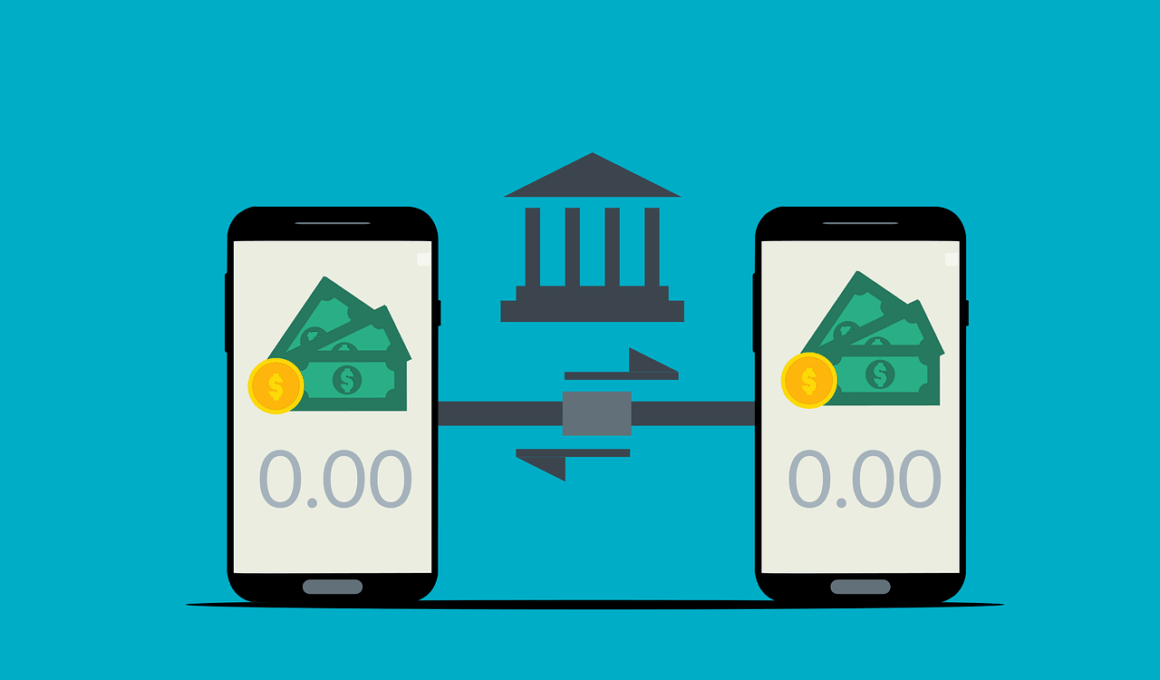Mobile Banking and Open Banking: Synergies and Challenges
Mobile banking has evolved into a fundamental aspect of the modern financial ecosystem. Users are increasingly embracing this technology due to its convenience and accessibility. Mobile banking apps provide services like checking balances, transferring funds, and paying bills at the touch of a screen. They allow customers to manage their finances on the go, which meets the growing demand for real-time transactions. The development of secure technologies also fosters trust in mobile banking platforms. As this sector grows, user experience becomes paramount. Banks are continually working to enhance app interfaces for smoother navigation. Furthermore, advanced analytics tools enable banks to tailor services specifically to individual user needs. This adaptability can lead to higher customer satisfaction and retention rates. However, mobile banking is not without challenges. Security concerns remain a top priority for users, and as cyber threats evolve, so must the defenses of financial institutions. Continuous education about online security practices is essential for maintaining user confidence in mobile banking solutions. Hence, the synergy between convenience, innovation, and security is critical for the future of mobile banking.
Open banking represents a shift towards increased financial transparency and accessibility. It allows third-party services to access banking data through secure APIs, which opens new opportunities for innovation. Through open banking, customers can utilize various financial service providers without needing to switch banks. This fosters an environment where users can benefit from tailored services suited to their financial behaviors. By leveraging data effectively, these third-party applications can create personalized financial solutions. They can compare offers from multiple banks, empowering users to find the best rates. Likewise, open banking helps banks innovate their own services. They can recognize trends and user preferences from aggregated data, enabling them to create better-targeted products. However, this openness also poses significant security risks. Protecting customer data from potential breaches is paramount, and the financial industry must establish robust protections against unauthorized access. Regulatory frameworks, such as GDPR in Europe, aim to ensure consumer protection. Additionally, fostering a culture of transparency encourages collaboration between banks and fintech firms. Ultimately, both open banking and mobile banking serve the same goal: enhancing user experience while ensuring financial security.
As banking innovations continue to develop, synergy between mobile banking and open banking becomes increasingly evident. Both systems aim to improve customer service by integrating technology with traditional banking practices. Banks can leverage the benefits of mobile apps to provide quick access to financial data, while open banking enhances the customization of these apps. The result is a more seamless, user-friendly experience that caters to diverse customer needs. Moreover, this synergy encourages competition among financial institutions. By offering better services and attractive features, banks can differentiate themselves in a crowded market. This competition ultimately benefits consumers, as they receive improved options and incentives. Additionally, the integration of mobile banking and open banking supports financial inclusion. It allows users without traditional banking access to participate in the financial system through digital means. Fintech companies often introduce innovative approaches to reach underserved populations. Mobile banking applications, when integrated with open banking frameworks, can bring essential financial services to underserved communities. Nevertheless, regulatory compliance will become critical as more players enter this space. Achieving the right balance between innovation and regulation is key to future success.
The Role of Regulations in Mobile and Open Banking
Regulations play a significant role in shaping the landscape of mobile and open banking. They provide guidelines to ensure customer data protection and promote fair competition among service providers. Without adequate regulatory frameworks, the risks associated with data breaches could deter users from adopting these services. In many regions, regulatory bodies have implemented strict measures to oversee data sharing practices. For example, the European Union’s PSD2 directive aims to create a secure environment for open banking. This regulation requires banks to implement strong customer authentication processes. These measures help mitigate security risks, thereby enhancing customer confidence. Compliance with such regulations may initially seem burdensome for financial institutions, but ultimately, they promote greater trust in the financial system. Additionally, regulation encourages innovation among banks and fintechs as they develop compliant solutions. It drives them to create products that prioritize user experience while satisfying regulatory demands. Hence, compliance should be viewed as an opportunity for growth rather than a hindrance. Moving forward, collaboration between regulators and industry players will be essential for fostering responsible innovation within mobile and open banking.
The technological advancements underpinning mobile and open banking are impressive yet not without their own set of challenges. Data security, in particular, is crucial for customer trust. As service providers continue to develop their platforms, they must prioritize robust encryption methods and secure transactions. Cyberattacks are becoming more sophisticated, necessitating continuous investment in cutting-edge security features. Additionally, regular audits and compliance checks ensure that security protocols are up to date. Addressing these tech challenges requires collaboration between banks, regulators, and cybersecurity experts. Moreover, user awareness is equally important. Educating customers about potential threats and security practices can significantly enhance their protections. Financial institutions should proactively engage their customers through targeted educational campaigns. Another challenge is ensuring interoperability among various systems. With numerous players in the open banking space, the ability to connect diverse services is vital for a seamless user experience. Establishing common standards among fintech and banking platforms can help tackle this issue. Innovation often relies on partnerships between traditional banks and new technology providers, making collaboration a critical factor for success.
The future of mobile banking looks promising, particularly as technological advancements continue to unfold. The integration of artificial intelligence (AI) is one exciting avenue that is gaining momentum. AI can analyze vast amounts of user data to provide personalized recommendations and services. For example, chatbots can assist customers in real-time, handling inquiries and guiding them through banking tasks without human intervention. Additionally, machine learning algorithms can detect unusual transaction behaviors, strengthening security measures by flagging potential frauds more efficiently. However, reliance on AI also raises ethical considerations around data privacy and decision-making. Balancing innovation with privacy concerns is essential for responsible advancement in mobile banking. As customer expectations evolve, banks must remain agile in their offerings and continue to embrace innovation. Furthermore, the role of digital currencies and blockchain technology is another area to watch. These technologies can revolutionize the way transactions are executed, paving the way for faster, more secure mobile banking. As we look ahead, it is clear that mobile banking will continue to evolve, reflecting the broader changes in the financial landscape.
In conclusion, the intersection of mobile banking and open banking presents both tremendous opportunities and challenges for financial institutions. Synergies between these systems foster improved customer experiences, enhanced competition, and broader financial inclusion. As innovation continues to drive this space, regulatory frameworks will play a critical role in ensuring security and protecting consumer data. Technological advancements, coupled with effective collaboration among fintech firms and traditional banks, are essential for creating solutions that address the evolving needs of consumers. However, it is vital to prioritize the ethical implications of emerging technologies while striving for progress. Ultimately, proactive engagement with users regarding security and privacy can solidify trust in mobile banking solutions. The future lies in a balanced approach where innovation, regulation, and user empowerment pave the way for a more inclusive and efficient financial ecosystem. Stakeholders must work together to harness the full potential of mobile and open banking while overcoming inherent challenges. With these elements in play, we can anticipate a dynamic shift in how financial services operate in the coming decade.


